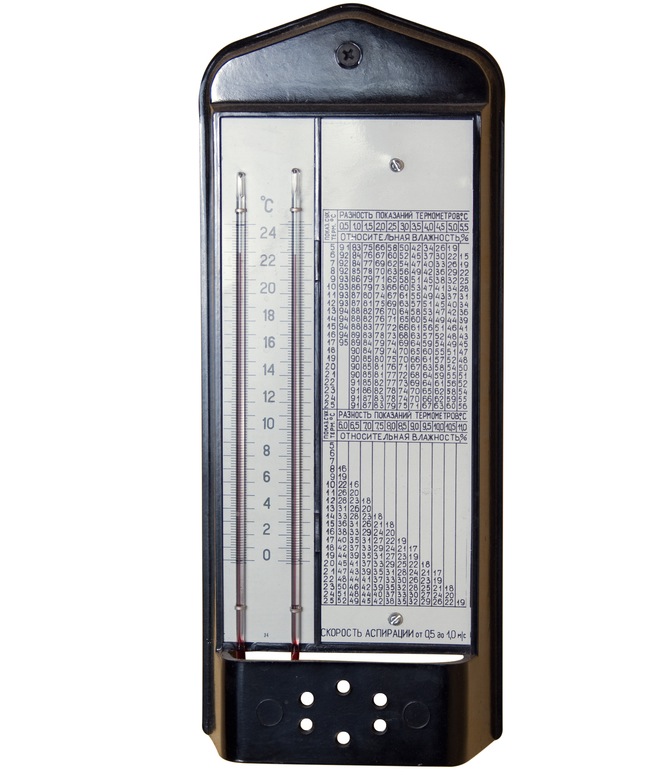Measuring Relative Humidity - Science Fair Projects

You may have noticed that humidity (the amount of water vapor in the air) makes a difference in how comfortable you feel outside. When the humidity is high in the summer we say it is "muggy." When it is cool and humidity is high we may say that it feels "clammy." Humidity can make a warm day feel warmer and a cool day feel cold. You can observe the difference that humidity makes.
In this experiment, you will determine the relative humidity using wet-bulb and dry-bulb thermometers. Such a device is called a psychrometer.
What you need:
- 2 identical alcohol thermometers (Celsius)
- Heavy cardboard rectangle, about 10 inches long
- Strong tape
- Fan
- Cotton balls
- Rubber band
- Warm water
What to do:
1. Use tape to secure the thermometers to the cardboard rectangle about 5 inches apart. Make sure the bulb ends of the thermometers hang below the edge of the cardboard by at least 1 inch and the numbered sides of the thermometers can be easily read.
2. Set the thermometers in front of a small fan set to a moderate speed for 5 minutes and record the temperature readings. This is to verify that your thermometers are calibrated and show the same temperature under control conditions.
3. Saturate several cotton balls with warm water and use the rubber band to fix them around the bulb of one thermometer. Set the thermometers in front of the fan as before. After 5 minutes record the “wet bulb” temperature reading and the “dry bulb” temperature reading.
4. To determine relative humidity subtract the lower “wet bulb” temperature from the higher “dry bulb” temperature to determine the difference and compare to the chart.
Results:
Even though the air temperature did not change, you should have noticed a lower temperature reading from the wet-bulb thermometer. This happens because as the cotton balls were drying, some of the water evaporated (changed to water vapor.)
This change of state, from liquid water to water vapor, requires a bit of heat energy from the surrounding atmosphere. The same thing happens when ice melts into liquid water. On the other hand, a tiny bit of heat is released when water vapor condenses back into liquid form or when water freezes to form ice. This explains why you feel cold when you get out of a pool on a windy day, even though the air temperature is high, the water evaporating from your skin is pulling the evaporation heat from your body instead of the air!
Sign up for the Live Science daily newsletter now
Get the world’s most fascinating discoveries delivered straight to your inbox.










